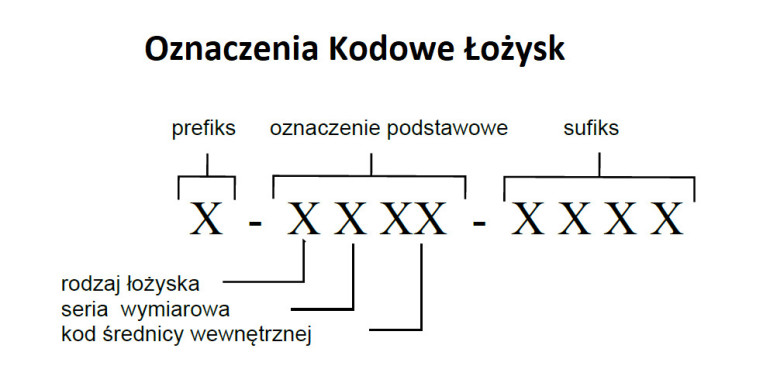
How to Read Bearing Designations? A Complete Guide for Professionals
Understanding bearing designations is crucial for interpreting technical specifications and selecting the right components for specific applications. In industries such as automotive, manufacturing, and many others, accurately identifying a bearing can make a significant difference in the performance and efficiency of machinery. Bearing designations typically consist of three main groups of characters: prefixes, the basic designation (number), and suffixes. Each of these components provides essential information about the bearing's construction, dimensions, precision, and operational characteristics.
1. Prefixes:
Prefixes, found before the basic designation, indicate specific characteristics of the bearing, such as materials, ring construction, or other structural elements. Here are some examples of common prefixes:
- F – Bearing with an outer ring flange.
- S or SS – Stainless steel bearing, offering better corrosion resistance.
2. Basic Designation:
The basic designation defines the core parameters of the bearing, including its type and size.
-
The first digit represents the type of bearing. For example:
- 6 – Single-row deep groove ball bearing.
- 7 – Single-row angular contact ball bearing.
-
Subsequent digits indicate the bearing’s size. For instance:
- For radial bearings, the first digit after the bearing type describes the width, while the second digit refers to the outer diameter.
- For thrust bearings, the first digit indicates the height of the bearing.
Inner Diameter (Bore Size):
The inner diameter of the bearing can be calculated by multiplying the last two digits of the basic designation by 5. However, for bearings with bores smaller than 10 mm or larger than 500 mm, the bore size is stated directly in the designation.
3. Suffixes:
Suffixes provide additional information about specific features of the bearing, such as seals, cage design, precision class, or internal clearance.
- Seals:
- Z – Metal shield on one side.
- ZZ – Metal shields on both sides.
- RS/2RS – Rubber seals on one/both sides.
- Precision Class:
- P0 – Standard precision (often omitted in designations due to its common usage).
- P6/P5 – Higher precision classes, used in applications requiring greater accuracy.
Bearing Types and Sizes – Designations:
The basic designation is the most critical part of the bearing number, providing essential information about the bearing type. Here are a few common examples:
- 6 – Single-row deep groove ball bearings. These are widely used due to their versatility and simple design.
- 0 – Double-row angular contact ball bearings, ideal for applications requiring both axial and radial load handling.
Bore Diameter and Its Designation:
For bearings with an inner diameter between 20 mm and 500 mm, the bore diameter is indicated by multiplying the last two digits of the basic designation by 5. For example, a bearing with the designation 6205 has an inner diameter of 25 mm (5 x 5).
For smaller bore sizes (under 20 mm), special codes are used:
- 00 – Bore diameter of 10 mm.
- 01 – Bore diameter of 12 mm.
- 02 – Bore diameter of 15 mm.
- 03 – Bore diameter of 17 mm.
Suffixes – Information After the Basic Designation:
Suffixes are critical for specifying additional details about the bearing:
- P4 – High precision class, used in applications requiring very accurate rotation.
- C3 – Indicates increased internal clearance, often used in bearings operating at higher temperatures.
Special Designations and Contact Angles:
Some designations, such as C for angular contact ball bearings with a 15° contact angle or B for tapered roller bearings, refer to the contact angle, which is crucial when handling axial loads.
Conclusions:
Understanding bearing designations is essential for selecting the right product for specific applications. Knowing what the different symbols mean allows you to choose a bearing that best fits your technical requirements, increasing machine efficiency and reducing the risk of equipment failure.
Keywords:
bearing designations, bearing prefixes, basic designation, bearing suffixes, deep groove ball bearings, bearing types, contact angles, precision classes, internal clearance, simmering.pl, bearing selection




Leave a Reply Cancel Reply